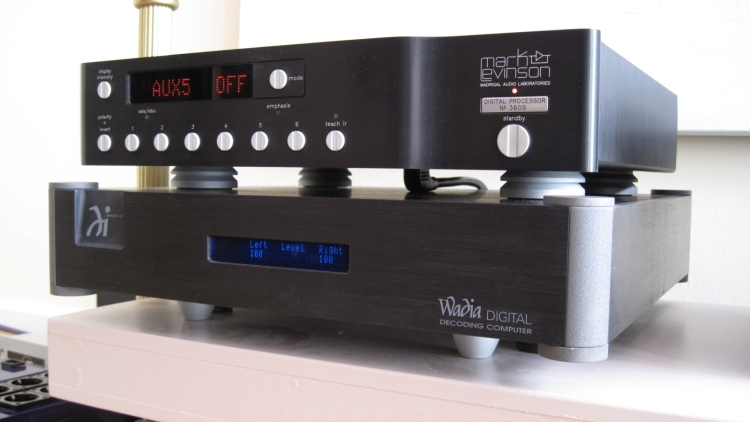
The Wadia 27 used to be the best Wadia DAC available, being the replacement of the original Wadia 9, which was the successor to the famous 2000
Then Wadia introduced the incredible new series 9. But many people still swear by the old 9. And in the meantime, GNSC has developed upgrades for the 27ix. Does the 27ix GNSC beat the Mark Levinson no.360s? And how does it fare against the built-in dac of the Wadia 861 CD player?
Where to start… well, let’s start by telling you that the 27 used to be Wadia’s reference dac. It was not cheap at 14000 euro. The GNSC statement upgrade puts 4500 euro on top of that, making for a 18.500 euro costing dac in total. Why the number-smashing you ask? Because this is, together with the DCS Delius/Purcell, the most expensive dac I’ve reviewed yet (and I’m kind of excited about that) and because I also want to make clear how relative audio can be. But more on that later.
GNSC
The abbreviation is short for Great Northern Sound Company. This company is specialized in modifications to Wadia products. Steve Huntley, who runs the company, used to work for Wadia as an engineer so he should know a thing or two about the products.
If anyone knows Wadia’s products’ critical places, he would be the man. Importantly, Wadia has granted him permission for the modding, without voiding warranty. The Statement upgrade used for the 27ix under review here, is the best upgrade they offer. From what I can detect with the bare eye, they changed capacitors, added capacitors and added a filter nearby the power inlet. Further, they isolated the transformers, added damping pads and removed some SMD resistors and bridged them with solid wire. It is all done very neatly and you only see the upgrades by comparing to pictures of the original. Sadly I don’t have the regular 27ix for comparison and so have to rely on my picture archive for comparison. The modifications may not seem impressive by the looks of them but they really mean a great deal for the sound.
Wadia 861 versus 861 GNSC
I’ve compared my own 861 CD player once to a friends Statement-upgraded 861 and the difference wasn’t subtle: my stock 861 was seriously declassified.
Only the price of the upgrade and the fact that I would have to ship my player all the way to the US and back made me not go for this upgrade. The difference was mostly in musical terms. A much bigger soundstage, a more relaxed and more colourful presentation, more fluid highs (no dryness at all, compared to my regular 861, which I later sold again for that very reason) and altogether the GNSC 861 sounded just more like real music to me and, dare I say it, more ANALOG. I’ve owned my 861 for many years and have compared it to many other players and dacs. Two friends still have an 861 and I hear one on a weekly basis. I know it very well, and I have also had various other Wadia DACs, such as the 12, 25 and 26 and so I am intimately familiar with the typical Wadia sound. That’s why I think I’m in a good position to make judgements about the 27ix GNSC versus the various stock Wadias. So much for comparisons from memory. Let’s proceed to the hands-on tests.
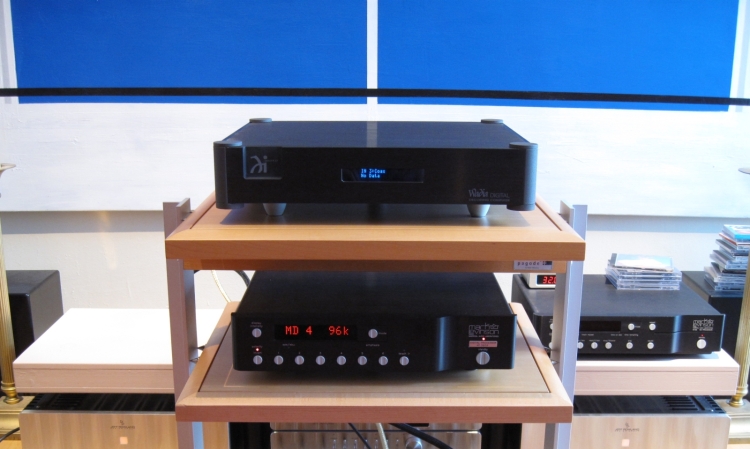
THE REVIEW PART 1
Wadia 27ix GNSC versus Mark Levinson no.360s
with PC source
First off, I wanted to give these two dacs a fair trial so I gave them identical powercords, fed from a star-wired extensionblock and swapped the digital and analog interlinks every time from component to component. This way the same input on the preamp is used, which is very important because I know that they sound different. And not only on my preamp btw… They were also placed in the same position on the same audiotable and both dacs were well-warmed up by the time I started the comparisons. I wanted to compare the performance with a PC source as well as with a good CD transport (the Levinson no.390s) in a separate process because DACs tend to respond differently when confronted with higher-jitter sources such as PC’s. That’s why I also had the Behringer Ultramatch Pro at hand, to re-align the bits so to say, as well as providing upsampling, if wanted, but the Behringer wasn’t used until later. First I listened to a playlist on PC (see below for specs) via both DACs by themselves and later on, I used the 390s’ CD transport in a more critical session, in which I placed the components on a Finite Elemente Pagode rack. But first, back to basic.
First I placed the components simply on top of each other, to warm up. And warm up the 27 did! It gets quite warm, almost as warm as my Rowland model 6 poweramps, when idling. It’s not hot, but indeed very warm. This brings doubts to my mind about longevity of the various capacitors, so close to the multitude of heatsinks inside. But there are no stories of prematurely failing 27’s as far as I know. Back to the comparison. The 27 was placed right on the audio table and if you placed the Levinson on top of it, there was a notable difference in sound: it became fuller, more relaxed but also less dynamic, a little over-damped you could say. So for the critical listening, every time I swapped the DACs into the same position.
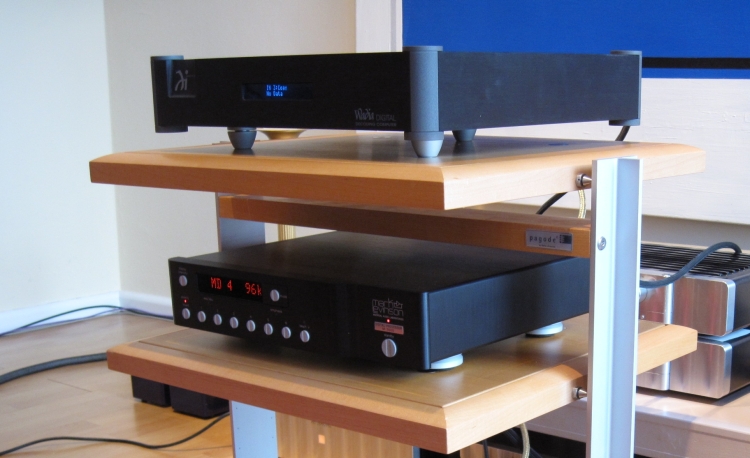
The differences between the Wadia and the Levinson
As always with Wadia, with the 27 you first hear how solid the bass is. And it’s not just solid, it’s also extremely well-textured. I love good bass, so for me this is joy!
In fact, I feel that Wadia bass is amongst the best bass possible in digital replay. Some Krells are amazing too and my own Levinson is no slouch either. But the Wadia beats the 360s in the bass department. Big time. The 360s is quick and agile but lacks some of the 27’s power and drive. Wadias can sound overly full and even slow if you don’t position them well but in this case, the standard position on my low equipment table was fine. I used Universal Ceraballs underneath and I know from experience that this helps a lot. Don’t put a Wadia on soft feet – it will not be happy!
But it’s not a universal victory for the Wadia though. The Levinson is quite a bit airier and fluid in the highs as well as being more relaxed in the mids and being more refined overall. The Wadia seems more coarse in its resolution. Don’t get me wrong: it is not grainy at all, just not as finely stranded as the Levinson. The latter seems to miss some naturalness in timbre and drive in the mids compared to the Wadia. Neutral though the Levinson is, it seems a little pale in comparison. So far I feel that both dacs have strong points and both are well-liked, but for different reasons. What is very important though is that the Wadia is not, I repeat NOT dry. This has to be stated clearly because I sold my 861 for that very reason. No matter how well it imaged, how groovy the bass was… I couldn’t stand the dryness and lack of fluidity anymore. Well, the 27ix GNSC is different. It is colorful and fluid. Just not as fluid and airy in the highs as the Levinson is. Biggest downside of the Wadia is that the typical Jeff Rowland air in the treble is missing. Everything is just a little darker. This is a result of the filter algorithm used. Roughly put, it some HF rolloff for improved transient sharpness that translates into better 3D soundstaging and better layering front to back, as well as a more upbeat drive. My system is critical in this respect but a friend who uses Apogee magnetostats has a very open treble and he can use a Wadia 861 without problems so as always, all is relative.
Some tracks sound better on the 27 because it sounds more visceral, more exciting and some tracks sound better on the Levinson because it is more subtle and more fluid.
The soundstaging, focus and front-to-back layering is very similar, although I have to say that my Magnepans are always big-sounding and seem somewhat less critical in these aspects. My previous speakers, Martin Logan SL3’s were incredibly focused. So much so that I sold them because I felt like a calibration device and just couldn’t relax anymore. On the Logans, I heard enormous differences between various DACS in terms of focus and staging. The Wadias were always big and deep sounding. But so is the Levinson so I guess on these aspects it is a tie. It is important to note though that Wadias can sound much better when used with clocklink. This further deepens the soundstage and heightens the sense of listening to real musicians. While the 27 can be connected with Clocklink, my Levinson transport cannot, so in these tests, the 27 is playing with one arm tied behind its back, so to say.
But this is just the preliminary testing. No component-specific tuning has been applied yet.
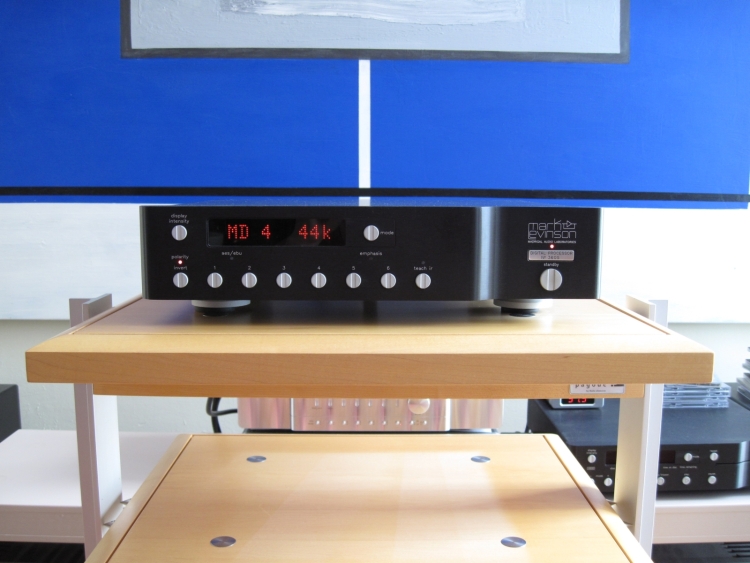
Some tweaking to the Wadia
Filter A is the Wadia-preferred filter. This is the filter that makes for the largest treble-rolloff, but also provides the biggest soundstage with most precise front-to-back layering, best dynamics and the most drive in the bass. It is also my favorite.
Filter B and C provide a balance between Wadia’s filtering and more regular filtering in which B is still a bit dark but more fluid than A and C is more open in the treble but also least Wadia-typical sounding.
Filter C makes the Wadia sound like it is not a Wadia. It makes the bass slower, less precise. It makes the mids more creamy but at the expense of imaging and dynamics. It does make the treble more open and fluid though. But at a price. I’ve always preferred to use Wadias with filter A and this was no exception.
The powercord was unchanged as I know from experience that Wadia needs all the openness it can get and thus a Belden powercable would not be a bad place to start. As I later found out, there is still something to gain by applying another cable and placing the dac on a rack but that wasn’t until the more elaborate tests started, with CD playback. For the moment I want to stick to the PC playback.
Some tweaking to the Levinson
Compared to the Wadia, the Levinson’s biggest drawback is its utter neutrality, translating into an emptier sound. It is absolutely not clinical sounding-it’s just that the Wadia has more color and drive and with my Magnepans, I can really use that. So, first I gave the Levinson back its preferred Lapp powercable. This provided a bigger bass, more color and more fluidity. It also took away some refinement in the treble but as it has plenty of that, this didn’t feel like a sacrifice. I also replaced the Sicomin pads (soft rubber) which are supplied with any Rowland you buy. I originally put these highly compliant rubbery thingies under each foot of the Levinson because it has its power entry at the bottom, right beneath the power transformer. Of course this is good thinking in itself but it poses many problems if you want to use a different cable with a bigger connector. That’s why I used the Sicomin pads. But they also make for a more gentle presentation, taking away from digital delivery and making the dac sound more rounded. I know, I always preach against using rubber but this is the proverbial exception. The Levinson is quick and dynamic enough to be able to take some rounding-off. I just like the more gentle presentation. As long as it doesn’t go at the expense of dynamics and speed. So did this bring the two closer together? Well yes. And no. The Wadia is still better at its strong sides and so is the Levinson.
In comes the Behringer Ultramatch Pro
This device is a digital omnivore. It takes any format and outputs any format but mostly it is known for its ability to upsample and re-align bits at the same time. Also see this article for a full review. The Behringer was used with a Wireworld Gold Starlight III digital interlink between Behringer and Levinson/Wadia and a Harmonic Technology Pro ACII powercord. When set to 96khz/24bits upsampling, the Behringer did the same thing as it did when I previously tested it which is tighten up the signal, making for more dynamics and better focus but at the expense of some fluidity and air, which is why I use the Wireworld digital interlink, to compensate for this with its superfluid and large delivery. But since the Wadia is already pretty tight, the Behringer couldn’t do much good for him. It did make for more open highs but the penalty came in the shape of a too forward sound. Everything was very pushy and the Wadia lost some of its color. I think that the Pagode and the Behringer together are just too much of a good thing, bringing just too much focus to the table.
The Levinson does have use for the Behringer, it makes him sound more like Wadia in terms of drive and rhythm but ultimately I prefer the Levinson by itself.
Preliminary Conclusion with PC source and on low audio table
At this point, there is no clear winner.
Both dacs have their respective highs and lows and I cannot choose between them easily. It comes down to taste and for me, I lean towards the Levinson because it reminds me more of analog with its immensely fluid and airy treble response and relaxed bass. But the Wadia is tempting… and there is more tweaking to come!
THE REVIEW PART 2
Wadia 27ix GNSC versus Mark Levinson no.360s
with CD source
On Finite Elemente Pagode Rack
Now things are getting serious. I will try to get the best from each component, using whatever tweaks I have lying around as well as experimenting with placement and cables. For this part of the review I used my Levinson no.390s cd player’s transport as a source and I placed both dacs on a Finite Elemente Pagode rack. I tried both components with the same powercables again but quickly settled on using Belden for the Wadia and Lapp for the Levinson because there was no point in trying to make each dac sound more like the other. Instead, I wanted to give them the best chance of showing what they were able of in the best circumstances.
Moving the Levinson from the low audiotable to the Pagode made for a fresher, airier, more neutral and more open presentation. But it was also more slender, with less powerful bass and less “meat on the bones”. I think that the Levinson doesn’t need the Pagode (or Spider, for that matter) because my speakers are already very open and I quite like the extra color and “groove:” that the heavy audiotable brings to the sound. But the difference was considerable: speaking technically, all parameters were just better without adding coarseness or becoming aggressive.
Moving the Wadia to the Pagode did more or less the same: more air, and this was welcome. Its bass became more tuneful and agile but also less meaty and I quite liked the meat… but in absolute terms, the Pagode was good for the Levinson, lending a lighter balance to its sound.
Overall, I felt the same about both dacs as I did when both components were on the low audiotable and the PC was used as a source so I did some further experimenting. Apparently, both dacs fare well with a computer source as I did not notice an enormous improvement when using the CD player. Of course CD was better with regards to overall fluidity, color and coherence but the Wadia did just as well as the Levinson and that surprised me as my Wadia 861 was not very good with external sources.
Because the Wadia was still drier than the Levinson I wanted to see what replacing its feet would do. I started off with Ceraballs, placed exactly on top of the Pagode’s 4 spike bases and this is what the comments above are based upon. (See photo). This made for the most direct sound as you can imagine, as the wooden level had nothing to do with the signal now. Placing the Ceraballs more to the sides of the wooden level made for an increase in relaxation and fluidity.
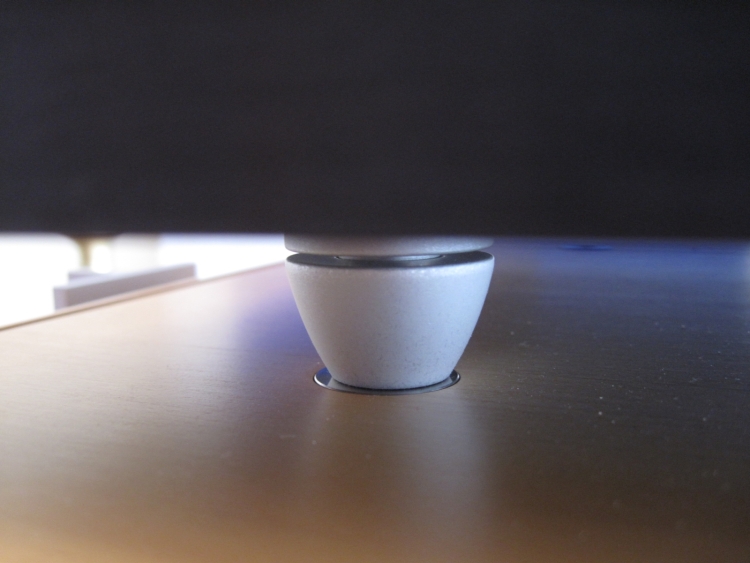
Above: the Wadia on Finite Elemente Universal Ceraballs. This made for the quickest, tightest, most dynamic delivery. It was also relatively most dry. It does matter however where you put the Ceraballs…
It still amazes me how much difference these seemingly trivial things can make. On a side note: the level on which you place the component also makes a difference. In case of Spider and Pagode the top level is most airy and fluid, the middle is more strict and dry sounding and the bottom level is worst in this respect. Unless you like an iron fist, in which case you should like the bottom level. Returning to the review, I now tried Wadia’s own cones, combined with saucers that had felt at the bottom. My own Wadia didn’t have this so this may be an upgrade done by GNSC or by the previous owner. Either way: this was the best the Wadia had sounded so far! Even more relaxed and smooth than using the Ceraballs, but without losing speed or dynamics. Even the bass was relatively unharmed by the felt under the saucers. These feet were going to stay!
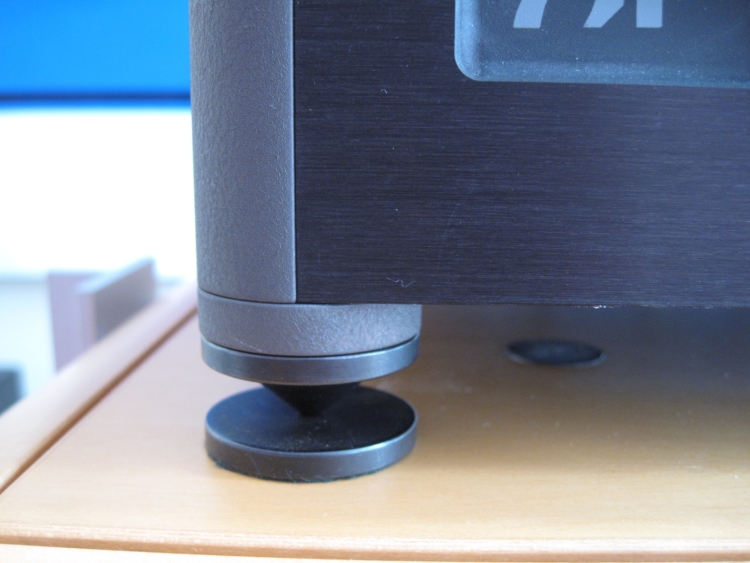
Above: Wadia’s own feet but for the GNSC version (or done by the previous owner) with felt applied to the bottom. This made for the best sound yet.
I tried all filter modes again but to no avail. Surely filter C makes for a more fluid and relaxed presentation, as well as adding more HF air but it takes away what I consider to be the typical Wadia strength: its rhythmic, percussive and very lively performance. If you switch to filter C much of this typical Wadia character is taken away.
Last bits – powercable swap and mains filters
For the CD replay test I didn’t bother to try the Behringer. Instead, I did some extra experimenting with powercords and mains-filters.
First came a Siltech SPX-10 powercable. And it was an immediate hit!
Overall it sounds like a Belden but better in every aspect. Still fast and agile and open in the mids and highs but compared to the Belden a lot airier and on top of that more fluid and less grainy. For sure this is the cable to go for with the Wadia. The highs were now almost as open as those of the Levinson using Belden. Only the last bit of air was still missing. And I had another cable to test: the Harmonic Technology Pro-AC II. This cable is a favorite of mine for use with the Levinsons but it also fared well in combination with Audiomeca and to an extent also with the DCS Delius and Purcell. But it is known (in my circles) to work less well with Wadia because the cable is simply a little bit too laidback. Combined with the 27ix GNSC this was still the case as the bass lost its articulation and became heavier, more leaden and slower. But it was hard not to appreciate the very silky treble and warm, inviting midrange the cable brings to the table. But a quick return to the Siltech made for a more toe-tapping experience and was overall more engaging.
System Synergy
I can’t stress enough that system synergy is a very important factor.
Let me elaborate. I and a friend have Magnetostatic speakers that are very revealing and also very uncolored. They can sound thin and too clean at times. On these speakers, you hear very clearly how the Wadia brings more color and substance to the table and this is well-liked. On our speakers, piano sounds more corporeal using Wadia. The Levinson is very neutral and can sound too neutral if combined with these speakers. The results may be totally different in other setups with more warm and full sounding speakers. It may even turn the balance upside down!
Racks
The Wadia really needs a good rack in order to sound its best. A Pagode or Spider rack can really open up its sound as well as lend it more speed in the bass. But it doesn’t work in every system. In my system for example, these racks were too much, making the sound too direct and taking too much from the bass, although making it fast and articulated, it also made it less voluptuous. And I quite like the Wadia’s bass for its nice shapes and fullness.
Output voltage
The Wadia has dip-switches inside to control the output voltage and with it the output level. This is meant to cater to different sensitivity in poweramps when connecting the Wadia straight to them without a preamp. But the dips also make a difference in sound! Broadly stated: the lower the output voltage, the more fluid the sound, but also the less dynamic. I used the dac with the standard setting (switch 2 on open). This gives a nice balance between tightness and fluidity.
Conclusion
Compared to many dacs, my Levinson included, Wadia sounds more physical, more powerful, more colorful and more dynamic as well as having an incredibly large soundstage. The latter can also be very well-layered from front to back but this is something for which you really need the clocklink, as I experienced with my 861. With the 27ix GNSC and using a Levinson transport or a PC there is no clocklink and this makes the Wadia’s headstart a little less because its soundstaging without clocklink is in the same leage as the Levinson. In order to hear its maximum potential, you’ll need a Wadia transport with clocklink connection. But even without clocklink, it is a reference quality dac that competes even with the very best dacs available now. If I had the money, I would just keep two dac around, using whichever one I felt like given my mood. But that would be in a perfect world and in reality, I have to decide.
The Wadia can be considered to sound more real because it is more percussive and lively, but it can also be considered less natural because it is less airy and darker in balance than most other dacs. One of my friends had a clear preference for my Levinson because he felt that the Wadia wasn’t natural and in fact digital sounding because it was less relaxed and lacked fluidity and continuousness compared to the Levinson. Another friend like the Wadia better because he focuses on dynamic slam, color and the percussiveness that the Wadia does so well. So you see, there is more than one view and people’s perception of what constitutes “real” may differ. Myself, I lean more towards having maximum fluidity and air. Even though my Levinson can learn a trick or two from the Wadia in several other aspects, ultimately I choose the 360S because of this. But it sure was a tough decision!
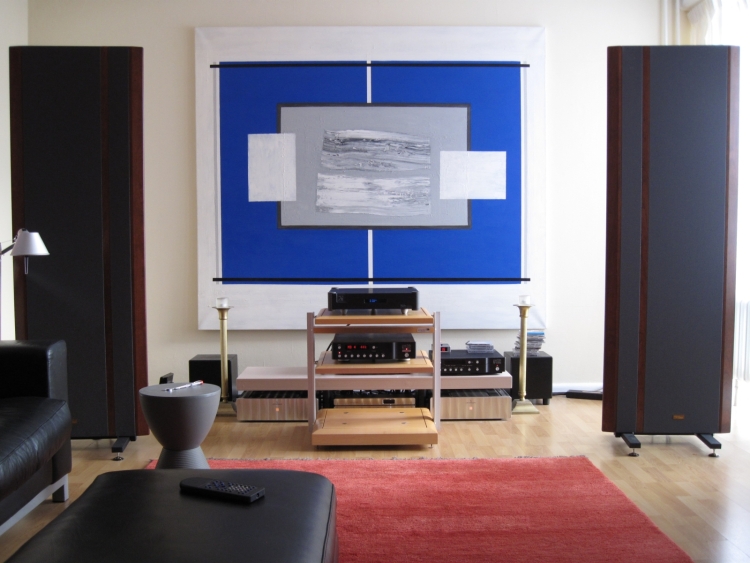
More Wadia Reviews
Wadia 12
Wadia 25
Wadia 26
Wadia 171i
Wadia 121
Wadia 861
Wadia S7i
Wadia 581
Wadia 781i





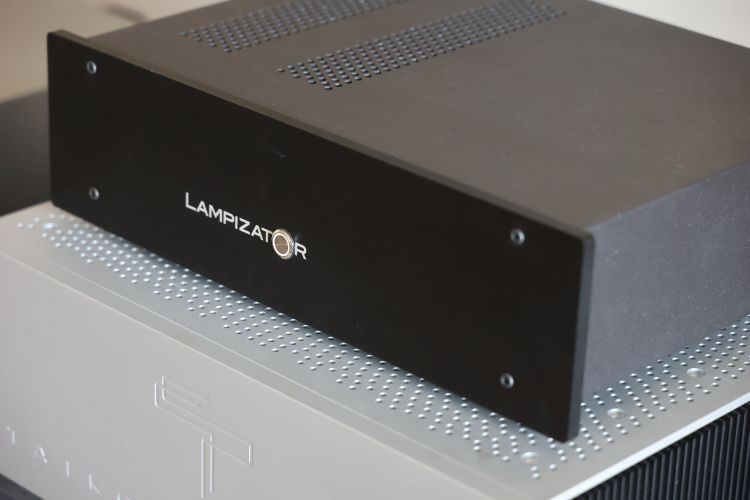
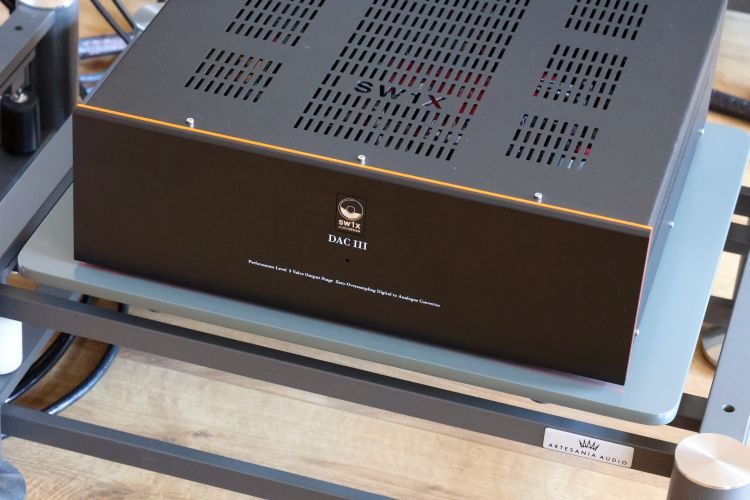
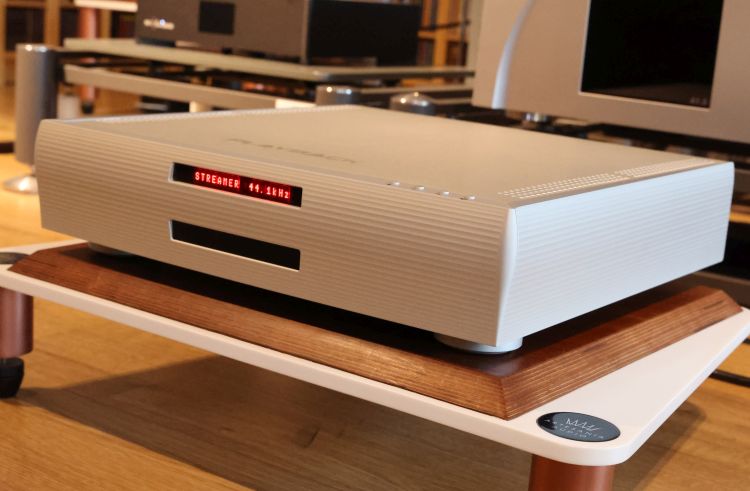
Christian, on one of the sites I have read that unlike 27 and 27i Clocklink, the 27ix Clocklink can do 24/96. Is this true and if so, what DACs it would use, for the PCM-1702 used in the other two are only 20 bit chips. Surely, 27ix wouldn’t use different DACs. Do you have an pics of its insides?
The Clocklink is the clock connection between a transport and a DAC. It doesn’t strictly dictate the maximum bit depth that a DAC can handle. In the case of the 27 versus 27i, apparently, the input receiver posed a limit, not the DAC’s DAC chip. All that changed is the input board or more precisely the capability of the input receiver chip or its firmware. The input board is hidden under a metal section so, alas, no photos.
Hello Christian!
I re-read all your reviews of Wadia devices. With anticipation, I bought a 27i DAC, without X. I respect your experience and the work done, but my sense of sound .. in a word, I’m upset: the sense of space is lost. Stereo is served narrowly. My mytek brooklyn dac + is more dynamic, more voluminous. My question to you – can this be due to the lack of ClockLink? Is it worth looking for a 270 transport to synchronize with the 27i or is it not worth waiting for a big difference due to the presence of ClockLink?
Hi Vladimir, there are several factors at play here.
Most obviously, Wadias are getting old. It’s not unthinkable that the 27 no longer sounds as fresh as it did 30 or so years ago. In terms of soundstage width, Wadias do well. Not the very best but certainly above average. I would not classify any Wadia as sounding narrow, but they sure are dense-sounding and that’s part of the Wadia charm. In terms of soundstage depth, yes, clocklink does a lot. But I would not recommend getting a 270 as they too are getting old and some parts are now near-unobtainium.
In terms of dynamics, I feel that Wadias were always above average but this takes into account their remarkable rock-like solidity in the bass. If you don’t like this, or if you are more focused on dynamic impact in the upper midrange then I can imagine a Wadia coming across as less dynamic. Moreover, they are not unbeaten champions dynamically. There are DACs that I heard later that do indeed sound more lively and have more bite.
The Mytek, as it happens, has an even more direct and impactful sound, along with more attack. All the 27 brings on the scale in this comparison is an arguably more organic delivery and subjectively perhaps a more natural timbre.
Oh, one thing to keep in mind is that Wadias do not like being used with filtered power distributors. This can make them sound timid and slow. Best use a neutral-sounding cable (a Belden 19364 is a good start) straight into the wall outlet.
Grand merci for your detailed answer! Christiaаn, will the M2Tech Hi-Face EVO device recommended by you replace the 270 transport (of course, we are talking about sound) or is it still a half measure and 100% of the sound will be only with the native 270?
The 27’s robustness, timbre, and tonal fullness will always be present, pretty much regardless of what you are feeding it with. Other aspects such as resolution, transparency, openness, airiness, speed, expression, dynamics, etc., will vary depending on the source.
The HiFace EVO is a great USB interface but it is no substitute for a Wadia CD transport, especially one with ClockLink. Do note, however, that the dark Wadia sound is also in the transports, and aging CD mechs can start to sound softer and slower than new. The HiFace, on the other hand, is very neutral but you’ll not be able to use USB asynchronously (where the DAC clock is boss), as you would typically do when using a native USB input on a DAC, which is technically (and also usually in practice) better. With an external converter, the DAC needs to slave to the incoming clock which, firstly, will usually be of lower quality, and secondly, muxed in the S/PDIF signal which is inherently more jittery.